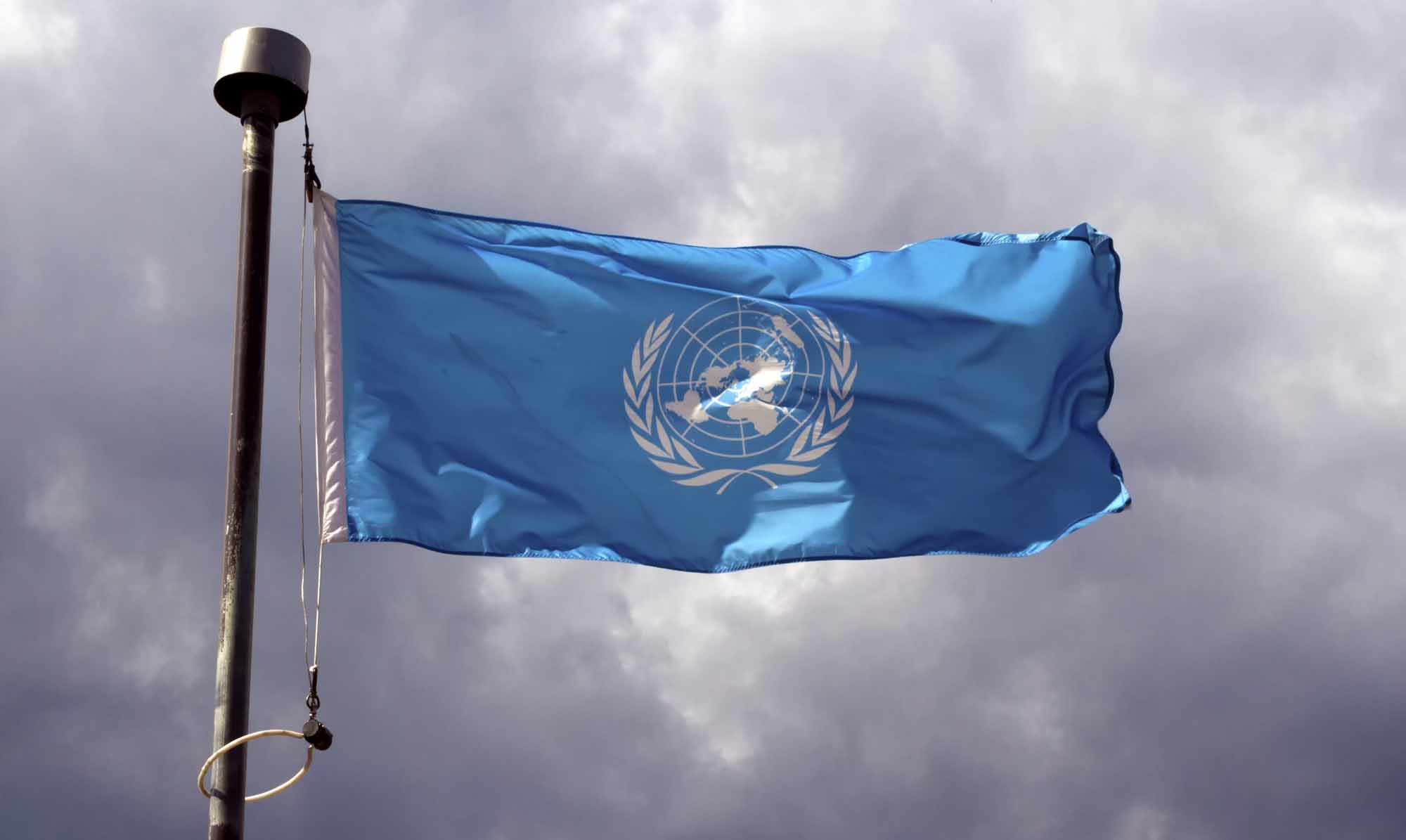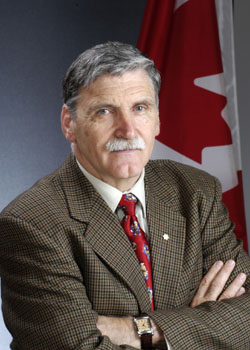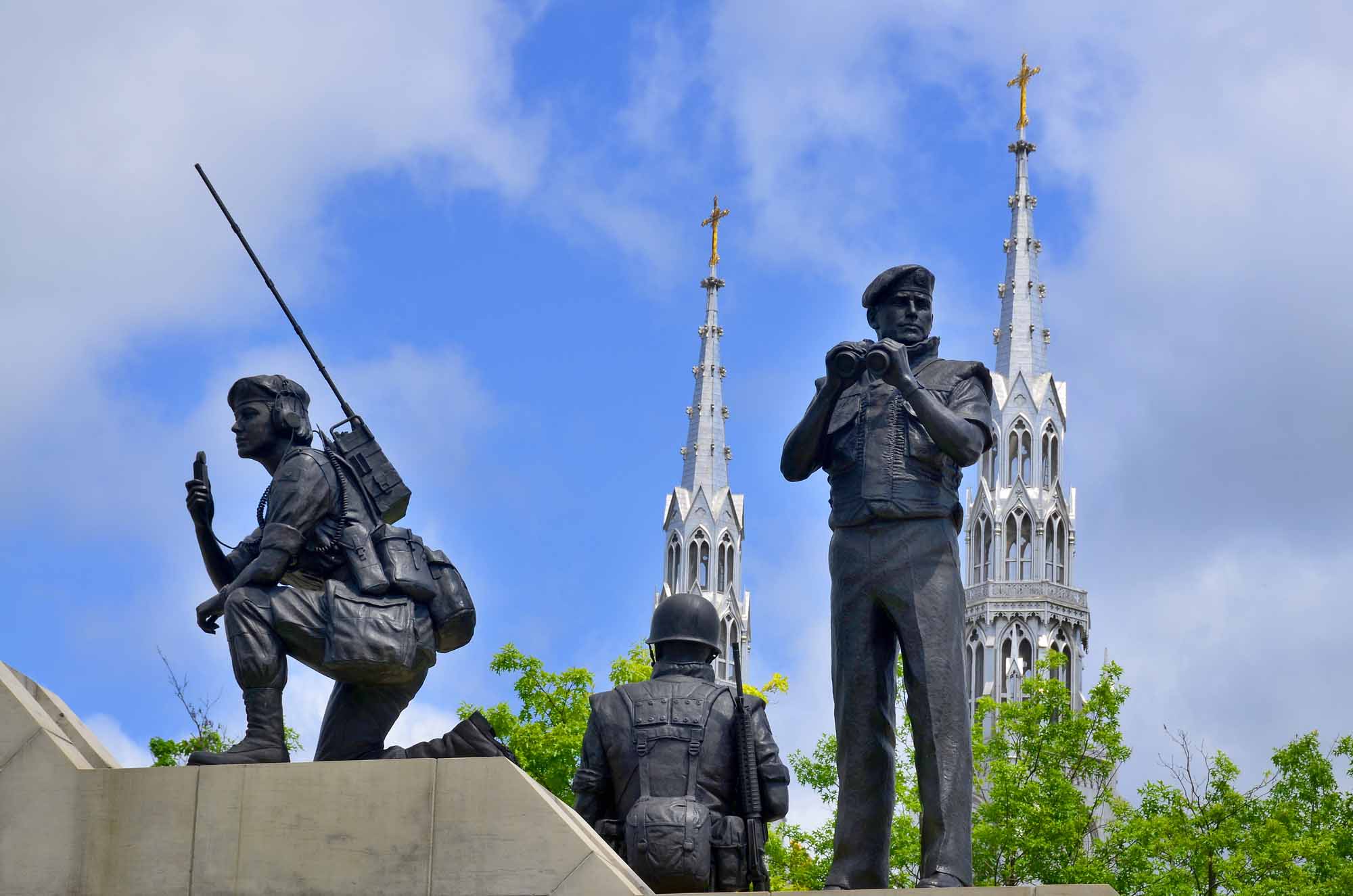The Responsibility to Protect (R2P) is a non-binding political commitment made by United Nations Member States to protect
populations from genocide, crimes against humanity, ethnic cleansing and war crimes. Canadian leadership was instrumental in the establishment of the International Commission on Intervention and State Sovereignty (ICISS) in 2000, which led to the development
and eventual adoption of R2P at the 2005 UN World Summit (see also Canada and Peacekeeping).

Background: International Failure to Prevent Genocide
The Responsibility to Protect (R2P) was born out of the failure of the international community to prevent genocide in the Balkans and Rwanda in the 1990s. During those conflicts, signatories of the Convention on the Prevention and Punishment of the Crime of Genocide adopted by the UN General Assembly in 1948 failed to uphold their promise “to prevent and to punish” genocide.
Canadian Major-General Romeo Dallaire, who led the UN Assistance Mission for Rwanda (UNAMIR) from 1993 to 94, called the Rwandan genocide a “failure of humanity.” While the international community turned a blind eye, Dallaire had pushed for action and refused an order from the UN to withdraw all troops.

In the aftermath of these atrocities, UN Secretary-General Kofi Annan asked: “If humanitarian intervention is, indeed, an unacceptable assault on sovereignty, how should we respond to a Rwanda, to a Srebrenica - to gross and systemic violation of human
rights that offend every precept of our common humanity?”
Development of The Responsibility to Protect
In 2000, the Canadian government, led by Lloyd Axworthy, set up the International Commission on Intervention and State Sovereignty (ICISS), which led to the initial creation of the norm of R2P in 2001. UN Member States unanimously adopted R2P at the 2005 UN World Summit.
R2P is a non-binding principle and its legal dimension has been debated. Today, it is understood as a “political commitment towards existing but contested legal responsibilities, best articulated in its current form as soft law.” It stipulates that a State carries the primary responsibility for the protection of its people from genocide, war crimes, ethnic cleansing and crimes against humanity, and that the international community has a responsibility to assist States in fulfilling this responsibility. Should a State be unable or unwilling to protect its population from these crimes, the international community has a responsibility to protect populations from these crimes through appropriate intervention such as actual or threatened political and economic sanctions, blockades, diplomatic and military threats, international criminal prosecutions as well as actual military action. The collective use of military force through the UN Security Council is regarded as the absolute last resort.
R2P is rooted in international human rights law and international humanitarian law. The development and adoption of R2P marked a turning point in the Westphalian understanding of state sovereignty and international humanitarian intervention, because R2P reframes sovereignty in a way that encompasses rights and responsibilities, including toward a State’s population.
Did you know? Canadian leadership in drafting and securing support for R2P is one example of notable Canadians who have been involved in international human rights and humanitarian interventions. For example, John Humphrey, a Canadian lawyer and scholar, helped draft the Universal Declaration of Human Rights in 1947 while Deputy Minister of External Affairs Lester B. Pearson pushed the Canadian government to support it. Pearson later won the Nobel Peace Prize in 1957 for organizing the United Nations Emergency Force to resolve the Suez Crisis and for inventing United Nations peacekeeping. In the 1990s, Prime Minister Jean Chrétien’s government spearheaded the Anti-Personnel Mine Ban Convention, also known as the Ottawa Treaty. Chrétien’s Foreign Affairs Minister Lloyd Axworthy was a prominent advocate of the creation of the International Criminal Court in 1998 and introduced the concept of human security.

Canada and R2P
Some argue that Canada has gone from being a vocal proponent of R2P to a reluctant humanitarian actor.
Under Prime Minister Stephen Harper, Canadian policymakers appeared to avoid mentioning “international responsibility to protect” altogether. Former Parliamentary Secretary Chris Alexander failed to say whether the Harper government supported R2P. While the Canadian government supported and contributed to the 2011 NATO military intervention in Libya, the Conservative Party made no public reference to R2P. This was in contrast to the Liberals, the New Democratic Party and the Bloc Québécois who invoked R2P to justify the intervention.
While events in Libya marked a significant moment for R2P, they also cast a shadow over the norm and sparked debates over when and how force should be used to protect populations, particularly when it occurs without the approval of their government. Some academics and policymakers argue that the intervention was an abuse of R2P for political purposes and an excuse to achieve regime change. The continued lack of peace in Libya has reinforced these views and contributed to the weak support for intervention in Syria, including in Canada. Many people have come to see the Libya intervention as the death of R2P.
During the 2015 federal election campaign, Justin Trudeau ran on a platform of “Canada is back,” pledging that his government would rebuild Canada’s international credibility by once again being a constructive voice in the world.
However, Trudeau has since been criticized for not doing enough to advance R2P at home and abroad, although he has invoked it publicly. For example, at the UN General Assembly on Syria in 2016, Trudeau invoked the doctrine stating that “I encourage other countries to help generate forward momentum on Syria, given UN members have a collective responsibility to protect the world’s vulnerable and weak when others cannot or will not.”
The Canadian government has not appointed a National R2P Focal Point. These Focal Points, which now exist in more than 50 countries, are typically senior officials within a country’s government and facilitate national and international efforts for atrocity prevention.
Humanitarian aid remains low and the presence of Canadian uniformed personnel in the UN has fallen considerably. In May 2020, with only 34 uniformed personnel deployed, Canadian personnel contribution reached its lowest level since 1956. Similarly, the short-lived Canadian Mission to Mali does not serve as an example of Canada’s renewed commitment to peacekeeping and R2P more particularly.

 Share on Facebook
Share on Facebook Share on X
Share on X Share by Email
Share by Email Share on Google Classroom
Share on Google Classroom




